 |
Switch to Russian |
So, every word has a visual and auditory image, just as a phrase does. At the same time, it corresponds to a certain concept. That is, upon seeing a written word, we immediately visualize the concept it represents and hear its sound. In the mind, there is a sort of mobile triangle (fig. 10), all three corners of which are visible from the other two. This means that, upon hearing, we visualize what we're talking about and can quickly write it down, and upon seeing (or feeling) something, we can pronounce and write the word that corresponds to that concept.
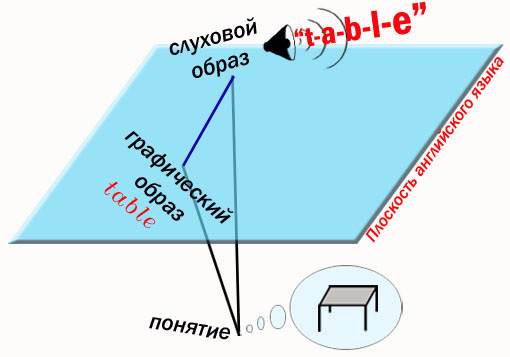
By introducing a second visual representation into the word (transcription), we complicate this structure, resulting in a sort of pyramid (fig. 11).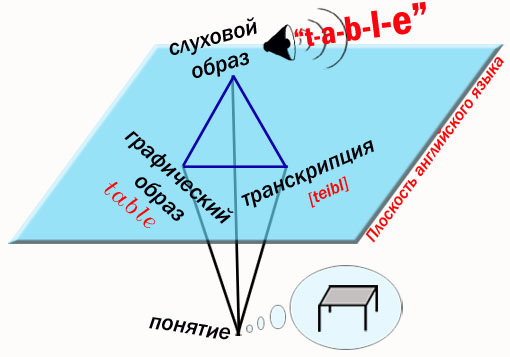
By doing so, we double the number of interconnections, resulting in six of them. This leads to immense confusion in the mind.
Point 1 - "concept", of course, lies outside the plane of language. In our diagram, it represents the apex of the triangular pyramid, whereas points 2,3,4, being its base, define the plane of language.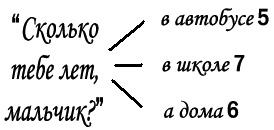
If a child has learned the alphabet, memorized the transcription, and begins to read, then the word "tall," for example, is perceived in the following way: the letter "t" is read almost without problems, but with the next letter, a triple alternative arises: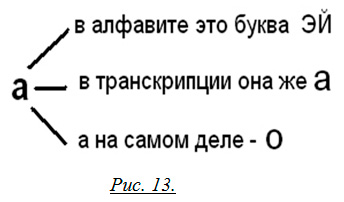
A real-life example:
A first-grader's grandmother, wanting to help her grandson in school, asks me: "What is '[t∫i:z]'? We need to draw pictures above this word." (That is, the connection between transcription and the concept is established). I pronounce this word. And the child, who started learning the language a year before school and associates my auditory representation with dairy products and the written form of the word "cheese," suddenly exclaims, having an epiphany: "I get it, grandma! In English, 'c' is 't'!"
Aren't you horrified by such a revelation from the child? It's like in the joke: "Do you speak English?" – they ask a Ukrainian boy. "Yes, I blow a little," the boy answers.
...However, it doesn't seem funny. How much strength, time, and patience will it take to clear all this clutter from one's mind and build something anew on a clean slate!
So, don't be too quick to accuse individual teachers of professional snobbery if they refuse to take a child who's "not a beginner." The animation of language, which underlies their methods, is not resuscitation, which requires much more effort and time. Today, experts in communicative methodology, followers of G. Lozanov, have learned to work wonders by truly breaking the barrier and reviving the language for adults with extensive experience in traditional learning. But this requires the highest professionalism and immense effort from the teacher. Yet, we have the opportunity to take a shorter, easier path, especially when talking about children and their first encounter with a language.
Now imagine the complexity of connections when adding an intermediary language (i.e., when translating into Russian)!
This is what the web looks like, where a person's thoughts are doomed to get tangled, when learning a foreign language according to the "traditional" scheme (Fig. 14)!
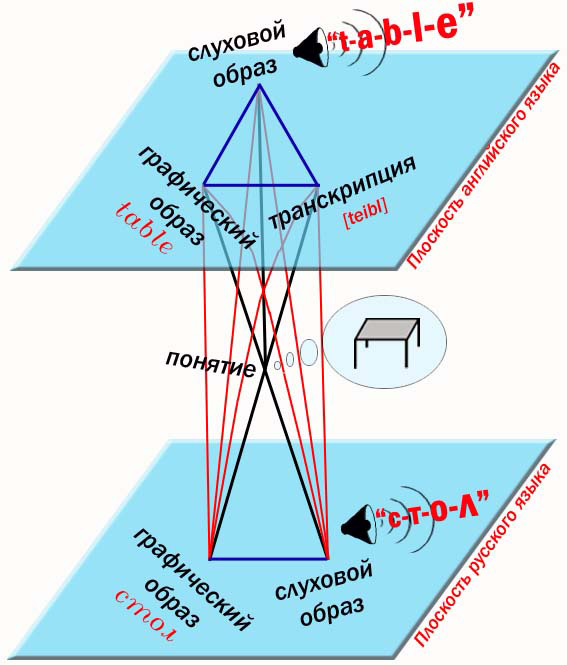
But that's not all! Some English teachers display a special ingenuity by introducing "Russian transcription" into the learning process! Thus, to the existing picture, a transcription [тейбл] is added, lying outside both planes, creating another six connections. Can you visualize this new structure? Now, compare it with the triangle scheme, which is not only much simpler but is the only correct one among all possible combinations of connections. It mirrors the "thought in language" process - a necessary condition for fluency in a language!
Let's return to the transcription. It should be present in all dictionaries as a kind of reference material (but not as a working one!). Imagine a situation. You are looking for the necessary information in a book, browsing through the table of contents. You found it: page 127. You open it, read it. Is it necessary to memorize the page number "127"? – Of course not! Similarly, the transcription serves as a kind of indirect addressing. That is, with a quick glance at it, the word should resonate in your head, and it's this pronunciation that you send to your brain for storage. Moreover, consider that you turned to the dictionary after seeing a word in a sentence, right? This means that the word will sound in your head in relation to this sentence. It's not static; it just showed one of its possible pronunciations.
- Still, you claim that transcription is not necessary when learning a language. But how can a child pronounce unfamiliar words if they don't even know the transcription symbols?
Indeed, as we've mentioned, the language constantly sounds to the child (from the teacher or the narrator in recordings). New, unfamiliar words will soon be read by them instinctively, by analogy. It's akin to plotting a function using points: we don't calculate its value at every point (as there are infinite points), but simply smoothly connect those whose values we know. As for random deviations (exceptions to the rules), they're unavoidable at any learning stage. Proper nouns, for example, will always be among these exceptions. That's why, even at an advanced level, when reading fiction, one should have its audio version, or many unfamiliar words, especially proper nouns, might be pronounced incorrectly in our mind.
As for introducing children to transcription symbols, this should, firstly, not happen at the initial stages but only after the child can smoothly read within the elementary vocabulary. And then, it's done almost in passing, focusing not on the entire graphical representation of the word in transcription symbols, but on a particular sound that might be doubtful. For example, we could select a group of words with the sound [ei], like "break, great...", contrasting them with words with the sound [i:], such as "clean, read". This method allows the child to associate sounds with specific spelling patterns without getting overwhelmed with the complexity of transcription.